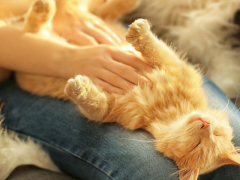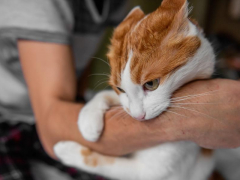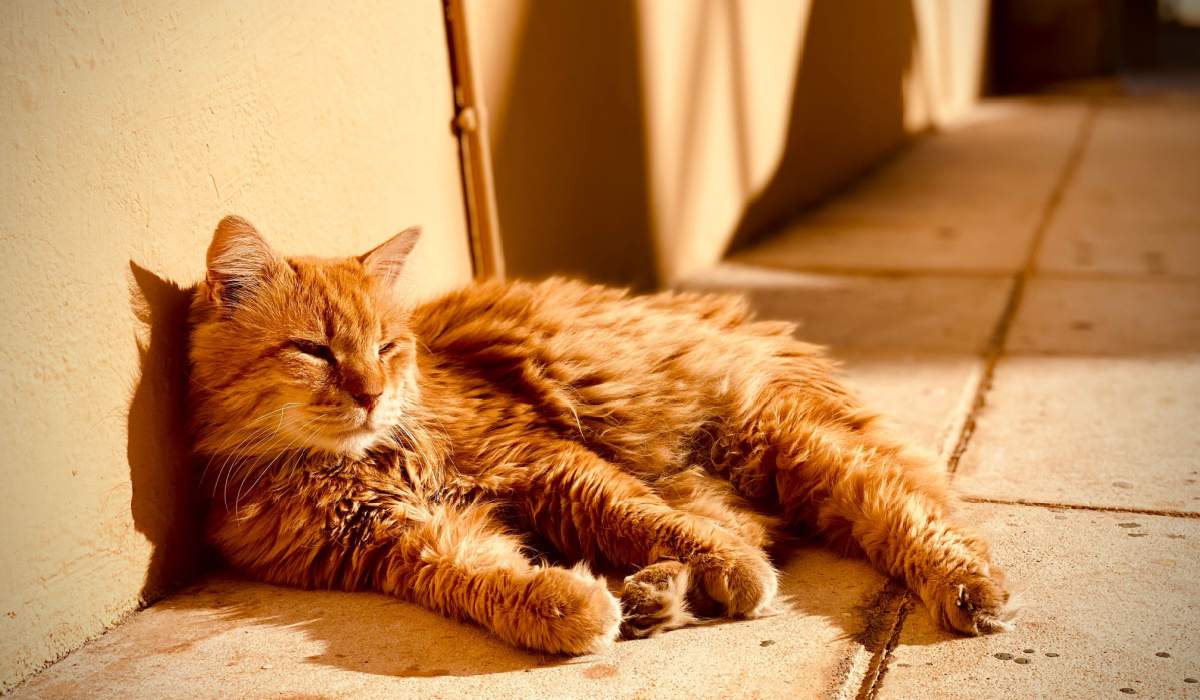
Many cat owners will be well accustomed to finding their cat stretched out for hours at a time in the sunniest spot in the house, or snoozing outside in the warm rays. In fact, if you want to seek out the sun, following a cat would be a good move! Cats are descended from their ancestors in the Middle Eastern desert and African plains, and therefore cope well with heat.
They also need to maintain a body temperature that is higher than ours, so it does make sense that they like warm spaces. However, just like humans, cats can suffer from dehydration, heatstroke, and sunburn, so some gentle precautions should be taken!
Read on to find out more about these sun-loving creatures, and how to keep them safe.
1. Maintaining Their Body Heat
The normal body temperature of cats is higher than ours, at around 102 degrees Fahrenheit – a normal human body temperature is 97-99 degrees Fahrenheit, for comparison. Although they have handy fur coats to help keep them warm, this naturally high body heat means that they must work harder to maintain a comfortable body temperature in our more temperate climates.
They have strong instincts to seek out hot areas to help maintain their warmth. A common trick is for cats to sunbathe with their belly up towards the sun’s warmth, using this large area with less fur to absorb the sun’s rays. Cats can sleep for long periods of the day, so maintaining core body temperature is especially important during this time.
Snoozing in warm places helps to prevent the drop in a cat’s body temperature which comes with sleep when they are no longer exerting themselves physically.
2. Diet And Energy
Cats are carnivores, and therefore have a very protein-rich diet. This means they have less access to ready calories to help maintain body temperature when it’s colder, as proteins do not provide as ready a heat source as other dietary components. Cats, therefore, rely on external sources of heat to maintain their body heat rather than their metabolism.
3. Genetics
Our modern-day house cats have an interesting ancestry and can be traced back thousands of years to their wildcat ancestors, who were desert creatures. Cats originated in some hot areas of the world, such as Africa and the Middle East, and these throwback genetics may play a significant role in our cats’ preference for warm places.
There are some exceptions to this rule: some breeds of long-haired cats, such as the Maine Coon, have evolved to suit a cooler area with lower temperatures and may thrive more during the winter months.
4. Pain Relief
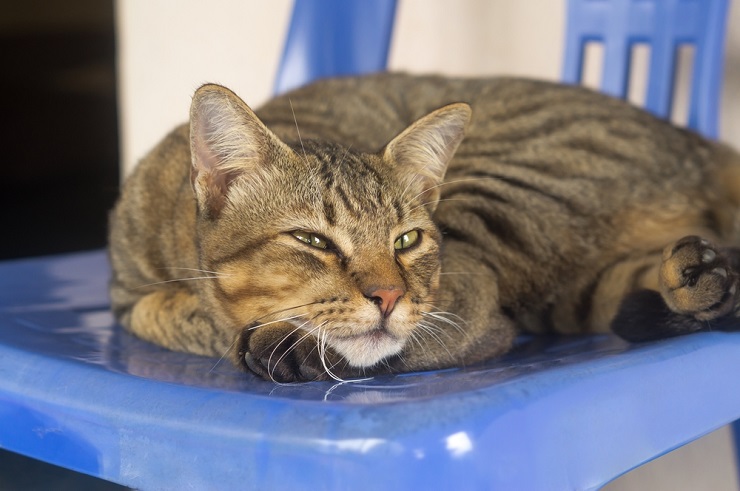
Basking in the warmth of sunshine can help relax joints and soothe the pain associated with rheumatism.
Sunshine is not only pleasant, but it can also come with some health benefits too! Many older cats suffer from arthritis, which can cause pain and discomfort in their joints, especially in the colder weather. Basking in the warmth of sunshine can help relax joints and soothe the pain associated with rheumatism.
Sunlight can also inhibit the growth of bacteria, for example, in open wounds. However, if you are concerned that your cat may have arthritis, or are just worried about your cat’s comfort, don’t rely on sunshine but speak to your vet about a check-up.
5. The Hormone Cycle
Female cats are seasonal breeders, meaning that their heat cycle is dictated by their exposure to natural light. Females start cycling in the spring when light levels increase and the rise and fall of reproductive cat hormones are strongly linked to sunshine and light levels.
This is an evolutionary advantage to ensure that vulnerable kittens are born at the right time for optimal safety, with milder weather and better numbers of prey to hunt for food.
6. Myth: Vitamin D source
Unlike humans, cat skin cannot metabolize UVB rays from the sun as a source of vitamin D. Cats are reliant on their diet for Vitamin D3, and the sun’s rays have no impact on their skin, either directly or through skin oils or fur. Studies show that cats fed a diet deficient in Vitamin D remain lacking whether they are exposed to UV rays or not.
Moderation Is Key: When Does Sunbathing Become Too Much?
Here are some common health issues to watch out for during the sunny weather. Older cats, long-haired cats, and those with underlying health concerns may need more careful monitoring, as they may be less able to cope with heat-related stresses.
1. Dehydration
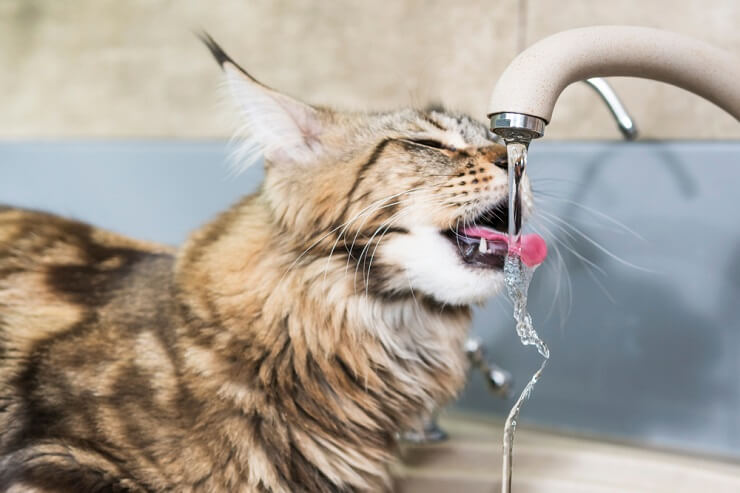
Older cats, and those with chronic health concerns such as kidney disease or diabetes, are more prone to dehydrate.
Cats, being descended from desert creatures, are good at conserving water, and gain most of their hydration needs through their diet. Sleeping for long periods of time in sunny spots can lead to dehydration, however, so make sure plenty of fresh, cool water is available. Older cats, and those with chronic health concerns such as kidney disease or diabetes, are more prone to dehydrate.
2. Heatstroke
If cats get severely overheated, they may develop heatstroke. This is a very serious condition and requires urgent attention from your vets. Symptoms include panting, lethargy, dribbling, or frothing at the mouth and can progress to collapse, reddened skin, and bright red gums.
3. Sunburn
Cats can develop sunburn if they spend too much time under the fierce sun. White cats are more prone to this problem, but any cat can get burnt, especially on thinly-haired areas such as the belly, ear tips, and lips.
Prolonged and multiple exposures to the sun can lead to the risk of skin cancer. It is advisable to use sunscreen on your cat if they are a known sun-worshipper, but remember to use a cat-specific product rather than human sunscreens, which can contain ingredients toxic to cats.
Cats are hormonally regulated by natural light and can use the sun as an antidote to sore joints and limbs. However, too much sun basking can put cats at risk of heatstroke, sunburn, or even skin cancer, so moderation is key.


